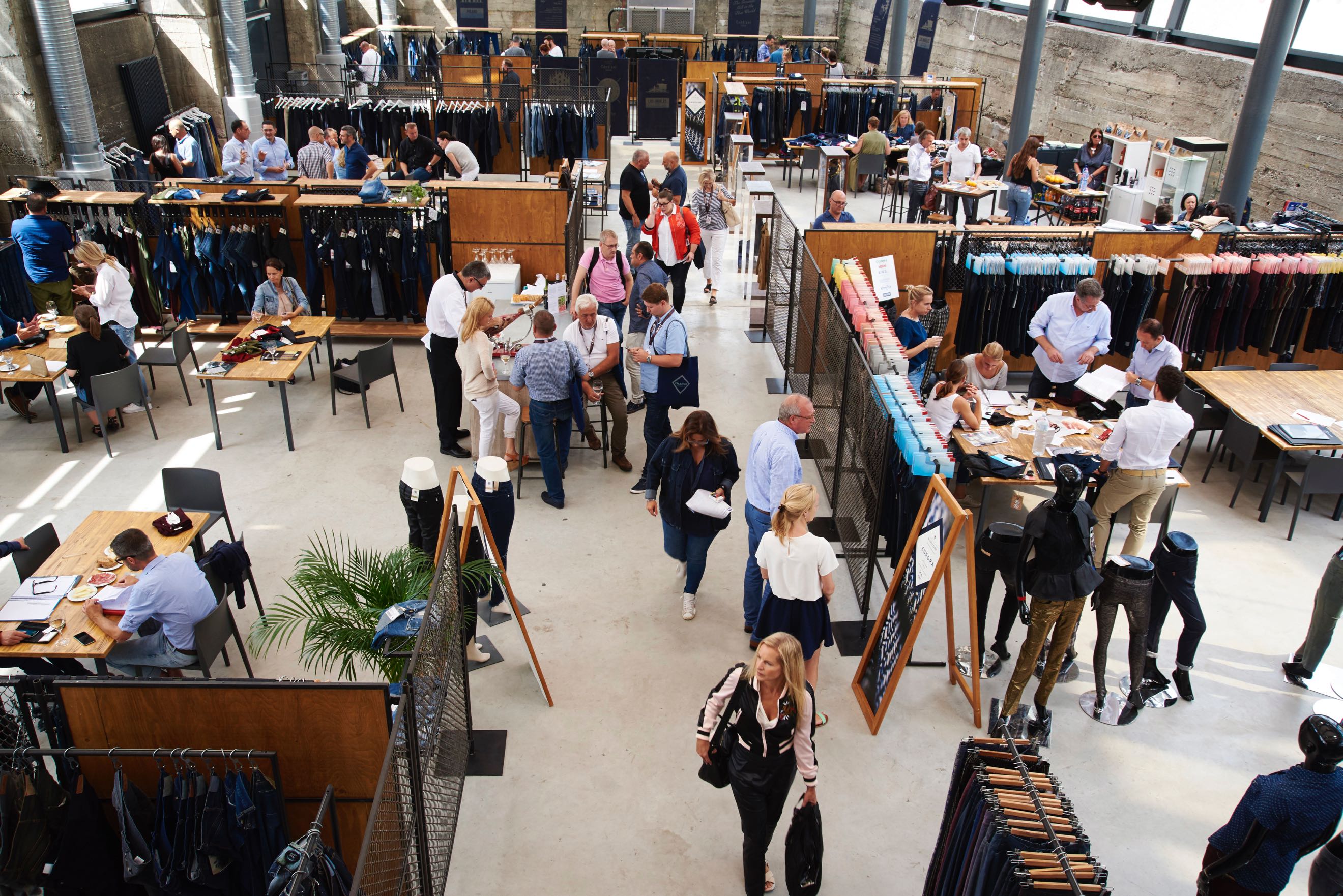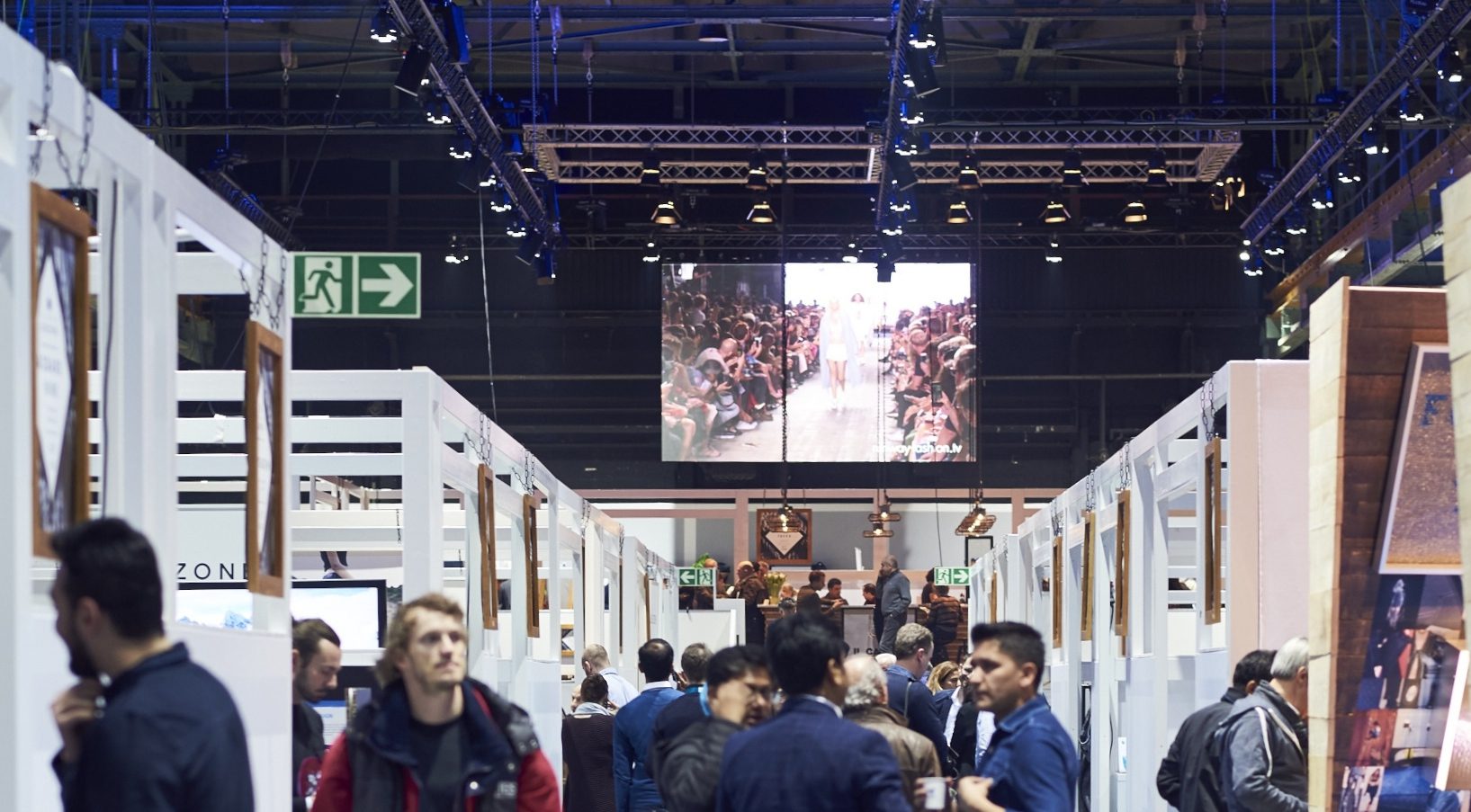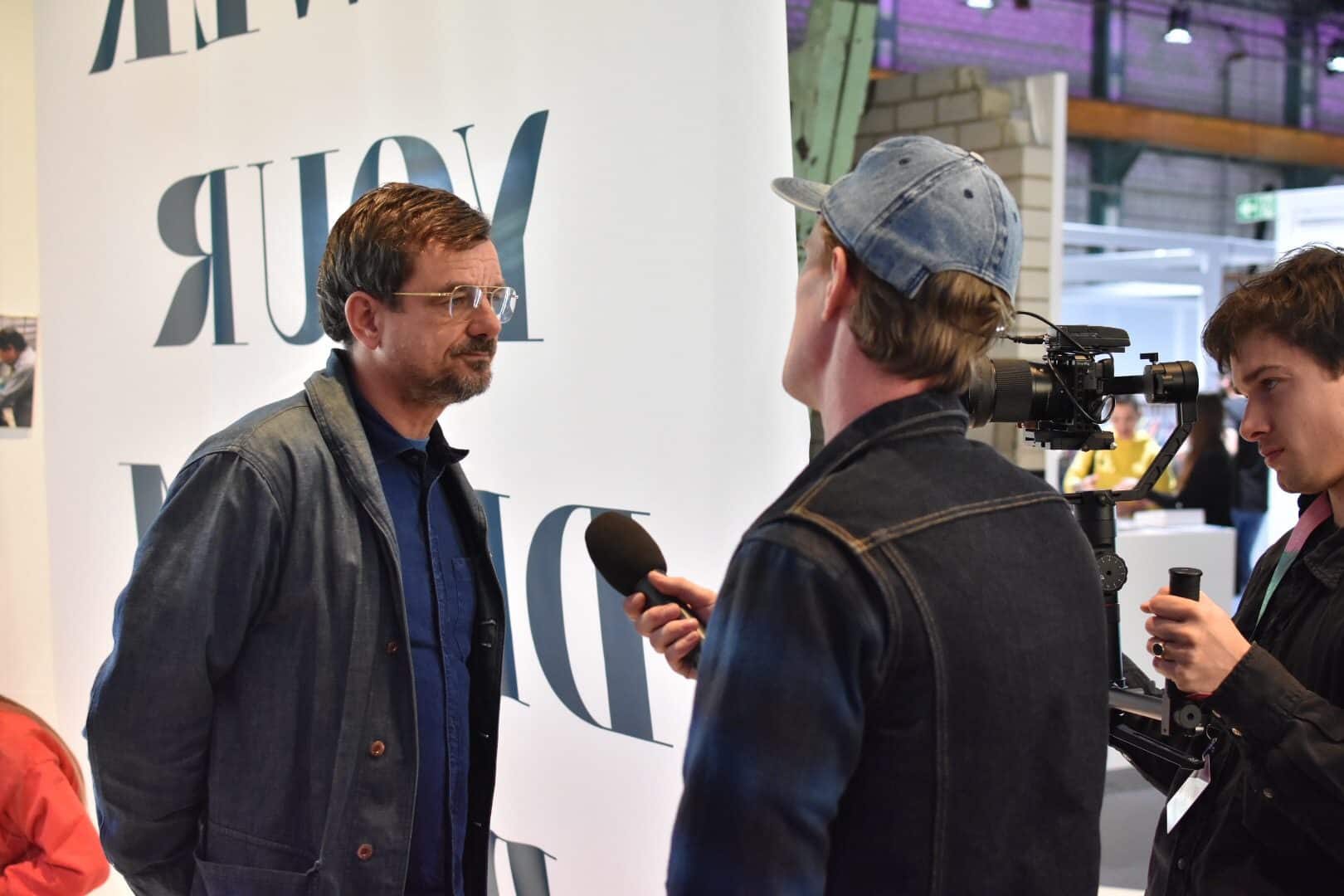Munich Fabric Start’s Bluezone Show Challenges Fashion Seasons with the Theme ‘Infinite’
This blog post is sponsored by Bluezone, the independent show for denim and sportswear by Munich Fabric Start. Register for the next show here!
Remember when fashion had two seasons; one for summer and one for winter? Today, the fast fashion industry is churning out low-cost clothes that mimic current trends and luxury brands in as many as 52 collections a year.
If we look back a hundred years, almost no one bought clothing based on trend. They simply couldn’t afford to; garments were considered investments, so people wore them to shreds, regardless of what was in fashion.
Fast fashion has changed that completely. It began fifty years ago when young people started wearing cheaply made clothes to rebel against the sartorial traditions of older generations. Today, based on the idea of disposability, many throw away their clothes once they go out of fashion—which they do quickly.
Envisioning Denim Beyond Seasons
In the 1960s, jeans became fashionable and people started wearing them not only for work. To meet the growing demand, makers modernised production and introduced new and more efficient technologies. More variations of denim were introduced, marketing was booming, and an industry was built around jeans as a fashion item.
While changes in denim have been evolutionary, the constant demand for newness is now also affecting the denim business. The result is exponential innovation to make denim even more versatile and enjoyable to wear.
But it’s not seasons that drive this innovation, Panos Sofianos, manager of Munich Fabric Start’s Bluezone, argues. Much of the innovation in denim transcends seasons. Take stretch technology, for instance, which creates new opportunities for fits and wearability that go far beyond seasons.
That’s why the theme of the A/W18 edition of the denim trade show in Munich was how denim can move beyond seasons to create long-lasting trends. In this sponsored blog post, eight industry experts discuss how going seasonless would affect our industry.

What Creates a Trend? Supply or Demand?
When it comes to fashion trends, everything is changing very quickly, and trends come and go in a couple of months, Arianna Morimando from Berto notes. But where do trends actually come from?
The source and driver of trends is a chicken-and-egg scenario with supply on one side and demand on the other. Are the suppliers and brands pushing trends, or do consumers want it?
In the past, supply ruled. Today, the consumer is king,” Panos argues.
Christina Agtzidou elaborates that trends are often inspired by consumers and how they express themselves, for instance through social media.
“Nowadays, our culture, what we eat, our political beliefs, the music we listen to, and the way we show our uniqueness are translated into trends,” the denim designer says.
Fashion brands, retailers, mills and suppliers observe and capture all this to supply more products. In that sense, she argues that the creation of trends is a combination of demand and supply.
However, as Hamit Yenici of Calik Denim points out, many consumers only latch onto a trend once they start noticing it. Trends live and die with consumers; forcing a trend down consumers’ throats is not at all sustainable.
That’s why Alberto Candiani of Candiani Denim believes that the main driver of trends is demand. Without genuine demand from consumers, he says, all the supply in the world can’t make a trend break through.
Think of sustainability. The average consumer doesn’t really care yet, but the media pump it up, supplier develop more products in that direction, and brands chase it big time just in case their customer will eventually care.”
Martin Schaefer suggests that trends are based on global or local preferences, not supply or demand. It’s these preferences that create future demand, he says. And based on the expected demand, the industry develops products.
There was never a demand for hydrogen-powered vehicles, but a desire for new fuel solutions for cars.”
It’s the same in the textile industry, he says. If there’s a demand for softer or more stretchy fabrics, for instance, suppliers come up with solutions.

Denim Without Seasons
Denim is a resilient fabric. It’s bought, sold and worn 12 months a year, as Martin points out. But not all consumers want to wear the exact same kind of denim all year round—in some climates that’s not really possible, Arianna (who lives in Italy) reminds us.
That’s why, these days, you have denim that matches every climate and calendar season, ranging from lightweight and open constructions for summer to heavy and brushed qualities for winter. And the beauty of indigo is that colour can be adapted easily.
“There’s a denim for every occasion,” as Arianna puts it. But does denim really need seasons?
According to Christina, the answer is no. In her opinion, brands and retailers created the need for seasons to push people to consume more. “Denim has seasons because of fashion,” she argues.
Alberto sees it a little differently. While classic denim may not need seasons, he argues that ‘contemporary’ denim does.
Seasonal variations are a huge part of the market, and different weights, shades and finishings are often imposed by fashion trends.”
Henry Wong of Artistic Fabric & Garment Industries agrees that “seasonality still affects trends.” But he points out that with social media directing purchasing behaviour at unprecedented speed, “those left chasing yesterday’s trends based on seasons will find themselves falling behind.”
What Denim Without Seasons Would Look Like
Moving away from seasons would force a shift in focus to product quality and sustainability, the experts agree. Companies would have to focus on long term goals, Qasim Ahmed of Kassim Denim adds.
Fewer collections would be released, quality would go up, prices would increase, and consumers would buy less and appreciate what they buy more, the experts argue.
As brands and retailers would be providing the products consumers want, there would be less overstock that needs deep discounting, Henry explains.
The surplus of garments would shrink, reducing energy and resource consumption, resulting in less pollution, more fairness and transparency, and—very importantly—higher quality garments,” Christina envisions.
The big winner in the ‘denim without seasons game,’ Martin argues, will be the consumer who will find new products whenever he visits his favourite store.
The consumer will be king as he can choose more products that suit his needs,” Panos argues.
Designers would constantly be developing new styles or capsule collections, and we would frequently find new looks in stores.
Ironically, Martin points out that “vertical retailers are already working like that.” He believes that permanent product development—more or less without seasons—is a big part of their success and that it creates more interesting for shopping experiences for consumers.
Hamit adds that consumer behaviour is already decreasingly influenced by seasons. “Few consumers are like, ‘okay, the new season is out in stores, I have to go shop’.”

How Denim Without Seasons Would Affect Brands and Retailers
Without seasons, everyone involved in the design, development and marketing would have less work to do, and the industry would shrink, Christina warns.
Breaking the cycle of seasons would affect the entire industry, and probably make it collapse,” she says.
Henry, on the other hand, believes that fashion without seasons would make designers, buyers and developers busier. “Instead of planning out seasons,” he says, “they will need to constantly research what consumers want and react to that immediately.”
Alberto observes how many makers and retailers are having a hard time communicating why consumers should buy their products.
‘Premium’ and traditional denim brands are losing tons of market shares to fast fashion retailers who make a decent product nowadays and are better at marketing it,” the fourth generation denim maker argues.
He would like to see marketing focus on “the difference,” as he puts it, meaning the origin of the jeans, what’s in them, how they were made, and so on. Going seasonless could help do just that.
Focusing on the product itself rather than pushing garments that will be out of fashion within a month is something all experts support. If you ask me, the way to do that is to change the focus to the benefits of the products and make these benefits much more explicit.
Supported by Munich Fabric Start’s Bluezone
This blog post is sponsored by Bluezone; Munich Fabric Start’s independent trade show for the denim and sportswear community.
The family-run Munich Fabric Start was established in 1996. Twice yearly, it attracts 20,000 fashion professionals to Munich. Bluezone was launched as the first denim-dedicated show in 2003. Today, it hosts more than 100 carefully curated exhibitors.
The show caters to all your sourcing needs: well-established ‘all-star’ mills; ‘catalyzers’ that create future trends in denim; and how new technologies and laundry solutions can make denim more sustainable.
Register for the next show here!
Disclaimer: Denimhunters was invited to Munich Fabric Start by the organisers. However, none of the individuals or companies mentioned in this blog post are affiliates.






